Shopping…Cooking…Eating: My First Pittu
Turning my favorite pastimes into thematic travel possibilities provides a way to engage with the culture and meet people.
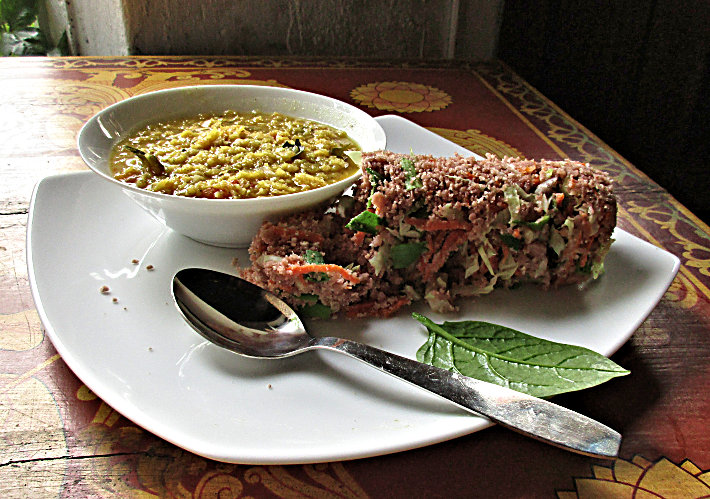
Introducing Raj
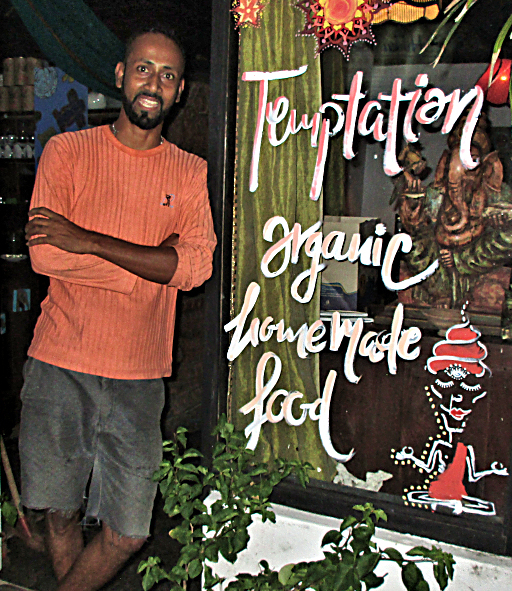
I was not in Sri Lanka 48 hours when I met Raj. I tentatively entered his café, Hikkaduwa Temptations, and asked to see a menu. This is what I do when I want to check out the menu items as well as the prices without committing to eating. The café was empty, and he had time to chat. Raj was sincerely friendly, which, I am finding is not unusual in Sri Lanka. We talked about Sri Lankan food and I asked about some of the menu items (rotti and pittu, in particular).
After asking lots of questions, I decided that pittu sounded pretty exotic and different from anything I had eaten before. When I said I would come back later in the afternoon when I was hungrier, he volunteered to let me watch him prepare the vegetable pittu I planned to order. So, we arranged that I would return at a time when he would not be too busy.
Raj’s Vegetable Pittu
Four o’clock found me walking up and down the highway trying to find Raj’s café again. There are so many little eateries along this main, rather touristy, road in Hikkaduwa, that they all start looking in the same. I finally walked in to find a smiling Raj.
A couple other parties were dining, but he brought me back to his magical kitchen to watch. First, he explained that the water had been turned off while some construction was being done on the property behind the cafe. It must be a little challenging to run a café kitchen with no water, but he had some buckets of clean water and was making do. Apparently, this happens quite often.
Pittu is made in a special pittu steamer. It is a funny-looking contraption. With its chimney-shaped lid, it reminded me of the samovars in Kyrgyzstan. But it has an entirely different function. You put water in the bottom part and bring it to a boil. Then you drop the pittu mix into the top “chimney.”
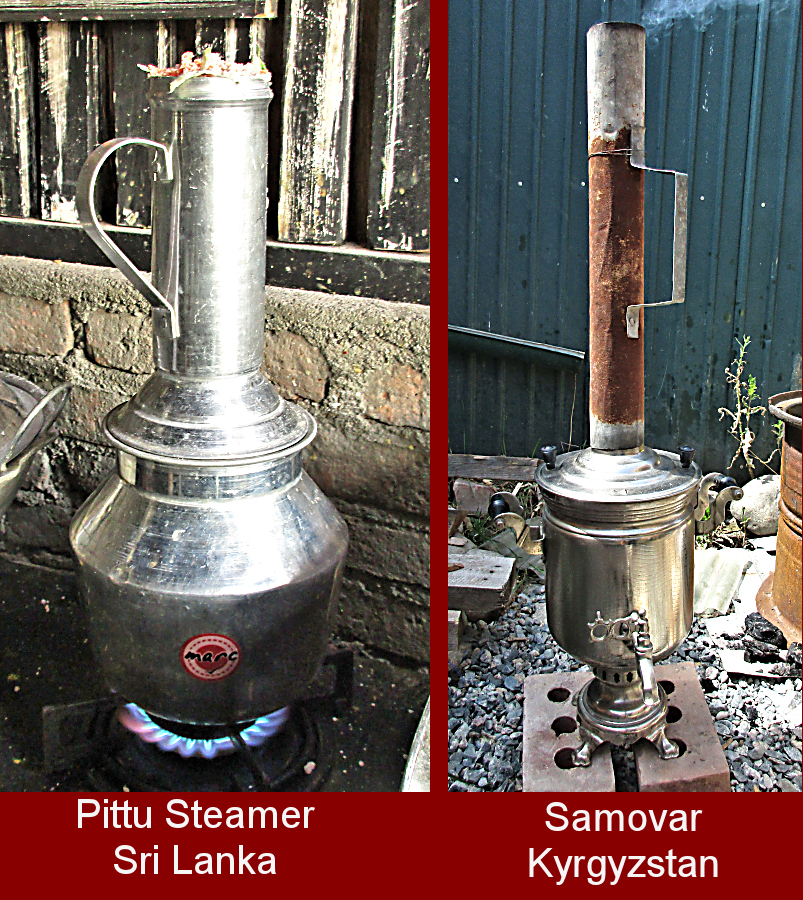
He made a mixture of red rice flour, salt and a small amount of water. Then he sliced and grated vegetables into thin slivers—carrot, onion, and cabbage and tossed them into the crumbly mix. “Three vegetables is good,” he informed me. You can use about any vegetable combinations you want.
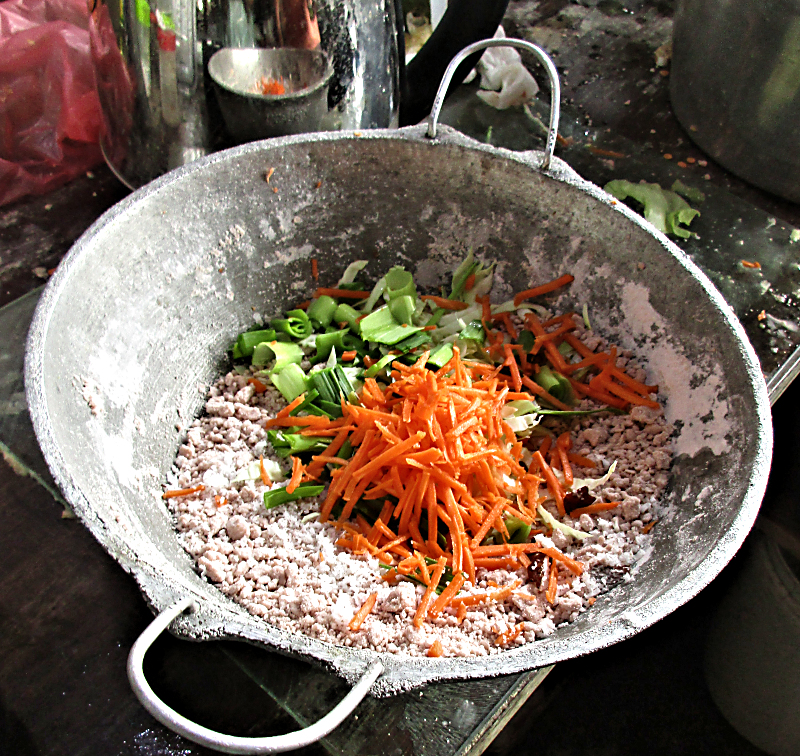

Want more Global
Shopping…Cooking…Eating Inspiration?
Subscribe to the Cathleen’s Odyssey Newsletter
He dropped handfuls of the dough into the “chimney” part of the pittu steamer. It surprised me that only takes five to ten minutes for the pittu to cook. You know it is finished when it shrinks down into the tube. Raj carefully pushed the cylinder out onto my plate and added some dal curry on the side. This was to be the first of many meals I would enjoy at Hikkaduwa Temptations!
I am fortunate to be living in a little apartment here in Hikkaduwa that has a tiny kitchen. I can cook! Next to knitting and spinning, exploring local food is my favorite activity when traveling.
My Pittu—Step by Step
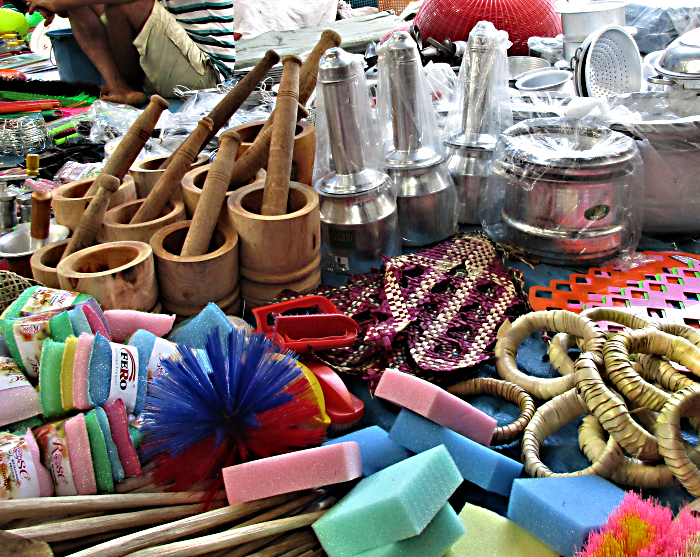
On my next visit to the Hikkaduwa Sunday market, I could not resist purchasing a pittu steamer to try making my own pittu, and this week I finally had all the ingredients available, so here are the step-by-step instructions.
Ingredients:
1 cup (140 gms) red rice flour
½ (5 gms) teaspoon salt
Very warm water (120◦F/50◦C)
½ cup (70 gms) freshly-grated coconut flour
About ¾ cup (75 gms) very-thinly-sliced/grated mixed vegetables (like onion, carrot, cabbage, sweet potatoes, etc.)
Add a very small amount of the warm water to the mixed rice flour and salt. Mix by hand until crumbly. You want just enough water to make a crumbly dough that will not completely stick together. The mixture will be small, fairly dry pellets. (If you are familiar with making pie crust, the texture is similar to pie dough before you add water to it.)
Toss in the grated coconut and vegetables. Of course, fresh coconut is best, but if you only have dried coconut, be sure to choose the unsweetened kind.

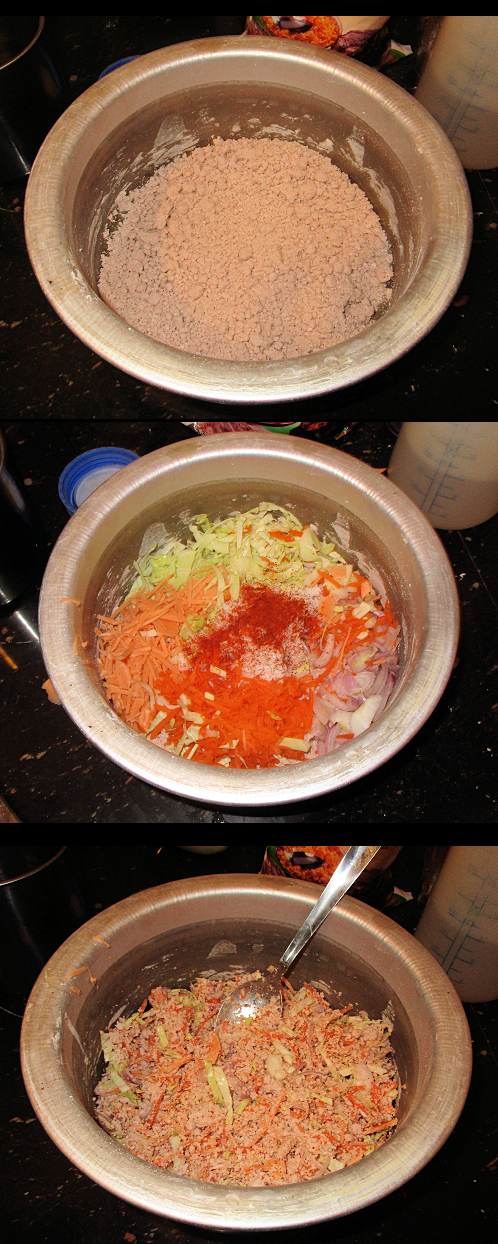
Lightly grease the inside of the pittu steamer and fill the tube with the crumbly dough and vegetables. Steam for 6-10 minutes. When you see the top of the mixture sink down in the tube, it is time to remove it.
Be careful: tap the bottom of the tube when removing the tube from the base so the tube releases cleanly without clinging to the steamer, or hold the base down firmly. This is for safety: if the bottom portion of the steamer gets pulled up by the top portion, it could come apart from the tube unexpectedly and spill the hot water.
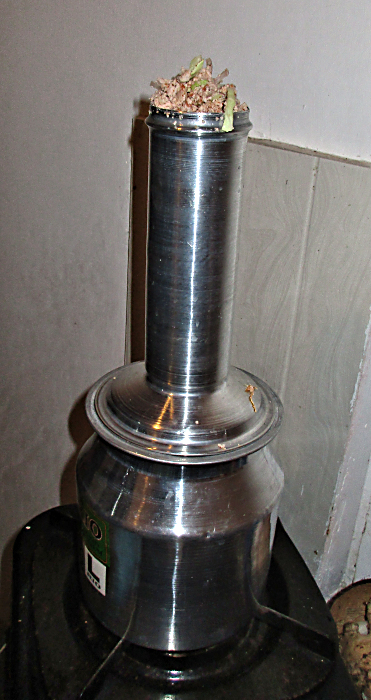
Carefully push the pittu out onto a plate using a knife or other long utensil to push against the removable grate at the bottom of the pittu.
Leftovers
I found that I usually have some of the crumbly pittu dough left over. I hate to throw anything away. After supper one evening, I added some coconut milk (you could also add water) to the left-over dough and vegetables so it was about the consistency of pancake batter. I left it out on the counter overnight so that it became a bit fermented by morning. This fermentation infuses the mixture with a slightly sour flavor. I dropped dollops of batter into about ½-inch of hot oil and fried the patties up for breakfast. Interestingly, bananas were a great accompaniment.
Turning my favorite pastimes into thematic travel possibilities provides a way to engage with the culture and meet people.
Learn more!
Other Blog Posts You May Find Interesting
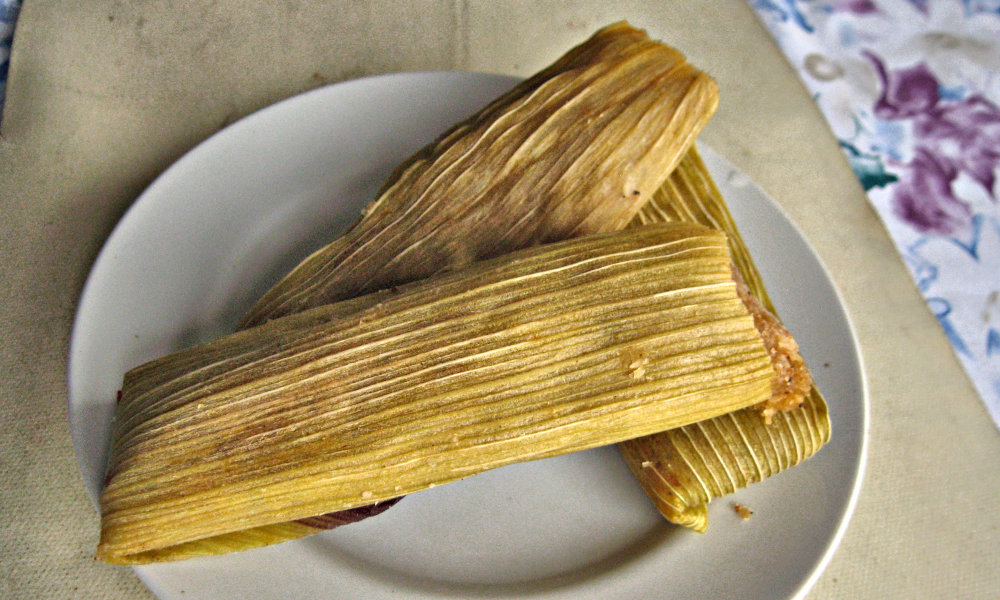
Shopping…Cooking…Eating: Tamales! En Peru!
Shopping…Cooking…Eating: Tamales! En Peru! One day a couple weeks ago I asked my host, Adela if she knew how to make tamales. “Claro!”—of course she
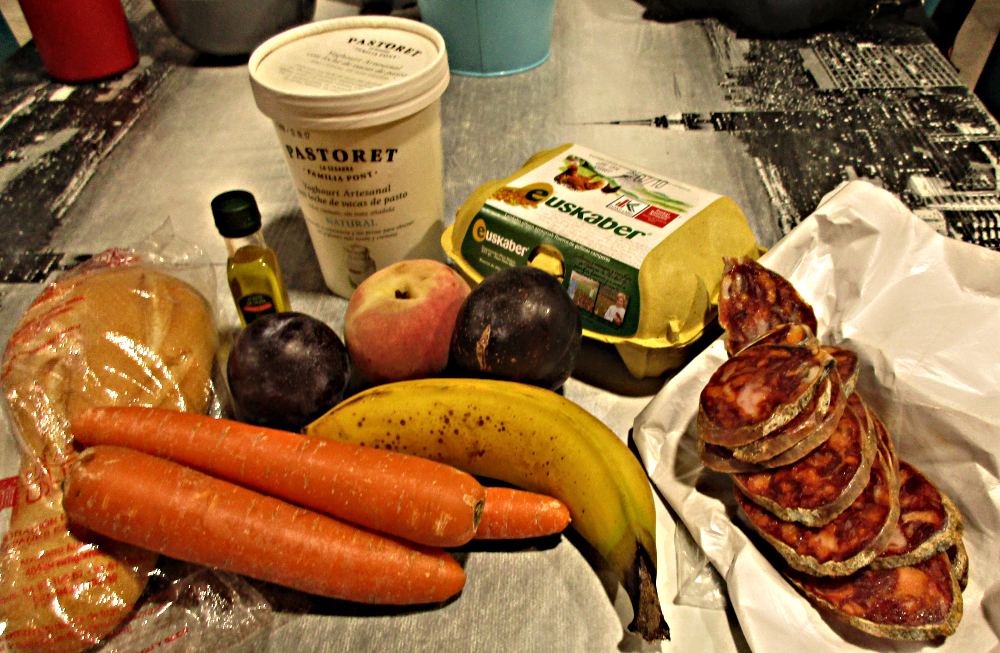
5 More Food Strategies for Affordable European Travel
My goal is to be in and out of the common kitchen as quickly and with as little mess as possible. You can create stunning and healthy whole-meal salads or sandwiches with little to no actual standing-over-the-stove cooking—and very little clean-up.
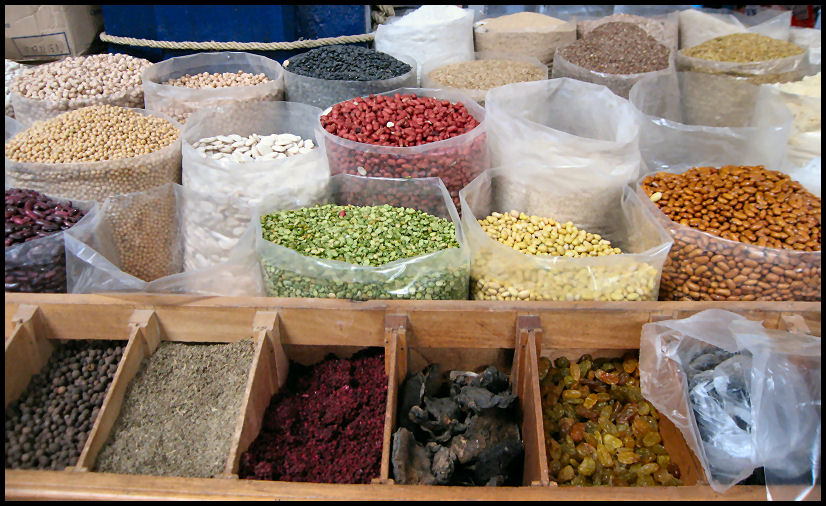
Shopping…Cooking…Eating: Calca’s Traditional Market
So, on Friday I decided to make empanadas. With some advice from Mabel in mind and suggestions as to where to find fresh chicken, I walked the 10 blocks to the mercado and started shopping.